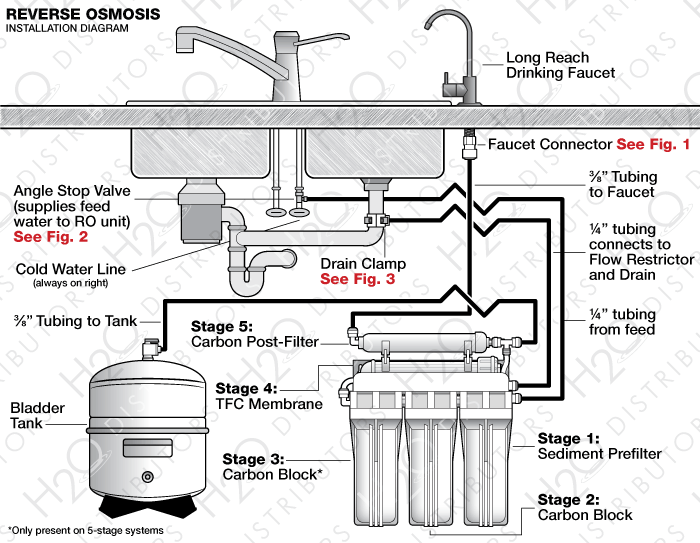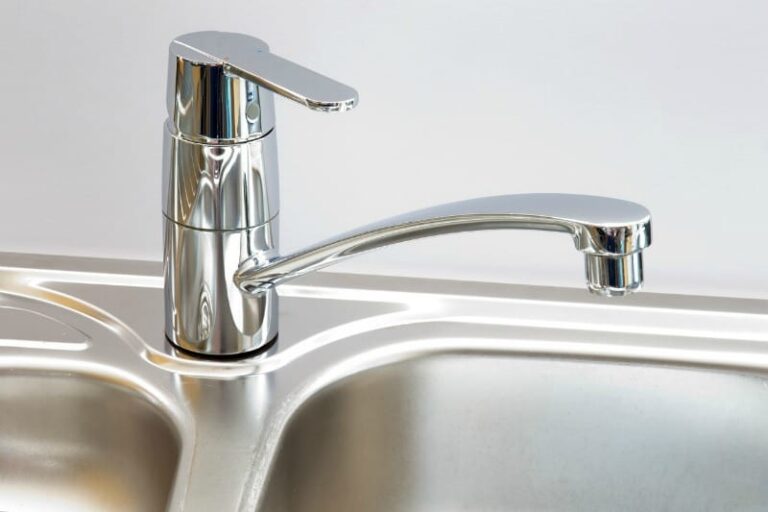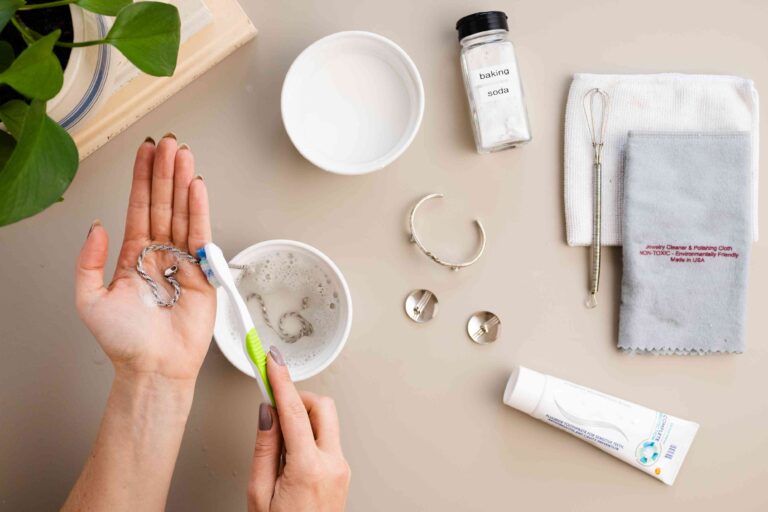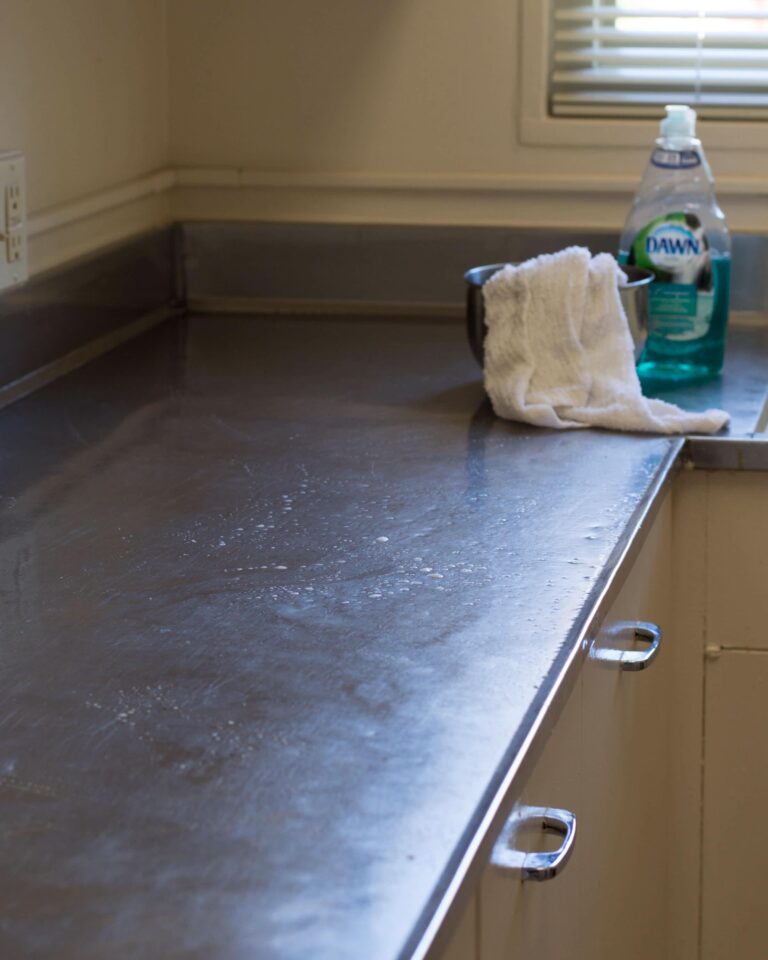How To Install A Reverse Osmosis Water Filtration System
Reverse osmosis water filtration systems are an effective way to filter out impurities from your tap water, ensuring that you have a clean and safe supply of drinking water. Installing a reverse osmosis system is not as difficult as it may seem, and can be done in a few simple steps. In this guide, we will discuss the steps involved in installing a reverse osmosis water filtration system so that you can make sure your drinking water is safe and clean.
Overview of Reverse Osmosis Water Filtration System
A reverse osmosis water filtration system is a reliable and cost-effective way to reduce harmful contaminants from your water. The system utilizes a process called reverse osmosis, which involves forcing water through a membrane to remove impurities. By installing one of these systems in your home, you can enjoy clean and safe drinking water while avoiding the hassle of buying bottled water.
Reverse osmosis systems require a few components for proper installation and operation. This includes a pre-filter, a reverse osmosis membrane, a storage tank, and a post-filter. The pre-filter is used to remove large particles such as dirt, sand, and debris. The reverse osmosis membrane then removes smaller particles such as bacteria, viruses, and chemicals. The storage tank stores filtered water until it is ready to use. Finally, the post-filter removes any remaining impurities.
Installing a reverse osmosis water filtration system typically requires some plumbing experience. First, you will need to locate the water line leading into your home and attach the pre-filter to it. Then, you will need to connect the reverse osmosis membrane to the pre-filter. After that, you will need to attach the storage tank to the membrane and the post-filter to the storage tank. Once all of the components are connected, you will need to turn on the water and allow it to run through the system.
A reverse osmosis water filtration system is a great way to ensure that the water you use is free of harmful contaminants. By following the above instructions, you can easily install a system in your home and start drinking cleaner water.
Benefits of Installing a Reverse Osmosis Water Filtration System
Installing a reverse osmosis water filtration system can be a great way to ensure that the water you and your family consume is free from contaminants and pollutants. There are many benefits to installing a reverse osmosis system, including improved water quality, cost savings, and environmental sustainability.
Reverse osmosis systems remove impurities from water by forcing it through a semi-permeable membrane. This process eliminates harmful contaminants, including bacteria, viruses, and heavy metals, as well as unpleasant odors and tastes.
In addition to providing clean, safe drinking water, installing a reverse osmosis system can also save you money. Since these systems do not require the purchase of bottled water, you can save a significant amount of money in the long run.
Finally, installing a reverse osmosis system is an environmentally friendly choice. By reducing the amount of plastic waste associated with bottled water, you can help to reduce your carbon footprint and do your part to protect the environment.
Installing a reverse osmosis water filtration system is a great way to ensure the safety and quality of your water supply. It can also save you money and help protect the environment.
Steps for Purchasing a Reverse Osmosis Water Filtration System
Purchasing a reverse osmosis water filtration system for your home or business is a smart decision. Not only will it provide you with clean, safe drinking water, but it will also save you money in the long run. Before you can enjoy the benefits of a reverse osmosis water filtration system, though, you’ll need to take the necessary steps to purchase one. Here’s what you need to know to get started.
First, determine your budget and the size of the system you need. Your budget will determine the quality of the system you can purchase, and you’ll need to consider the size of your water supply to ensure that the system you select can adequately filter it. Additionally, you should consider any additional features that may be beneficial, such as a tankless design or pre-filter system.
Next, you’ll need to research the different options available. Look into the different brands and models, compare their features and prices, and read customer reviews to see what others have to say about their experiences. It’s also a good idea to talk to a professional to ensure that you’re getting the right system for your needs.
Finally, once you’ve selected a system, you’ll need to make sure it’s installed correctly. The best way to do this is to hire a professional installer who will be able to set up the system correctly and ensure that it is working properly.
By following these steps, you will be able to purchase the right reverse osmosis water filtration system for your needs and have it installed correctly. With the right system in place, you can enjoy the benefits of clean, safe drinking water for years to come.
Preparing Your Home for Installation
Installing a reverse osmosis water filtration system in your home can help you ensure that your family is getting clean and safe drinking water. While the installation process is relatively straightforward, it’s important to take some time to prepare your home for the installation beforehand. Here are some tips to help make sure the process goes as smoothly as possible.
First, clear any obstacles away from where the installation will occur. This includes furniture, rugs, and any other items that may be blocking access to the area. You’ll also want to turn off the main water supply to your home while you work.
Next, gather the necessary tools and supplies. You’ll need a wrench, some plumbers tape, an adjustable wrench, a power drill, a pipe cutter, and some other basic tools. You’ll also need the components of the reverse osmosis system, such as the filter housing, the pre-filter cartridge, and the post-filter cartridge.
Finally, make sure you have the necessary space. You’ll need to measure the area where the system will be installed to ensure that it will fit. If you’re installing the system beneath your kitchen sink, you’ll also need to make sure that there’s enough clearance for the system as well as any connecting pipes.
By taking the time to prepare your home for installation, you can ensure that the process goes as smoothly as possible. Installing a reverse osmosis water filtration system is an important step towards ensuring that your family has access to clean and safe drinking water.
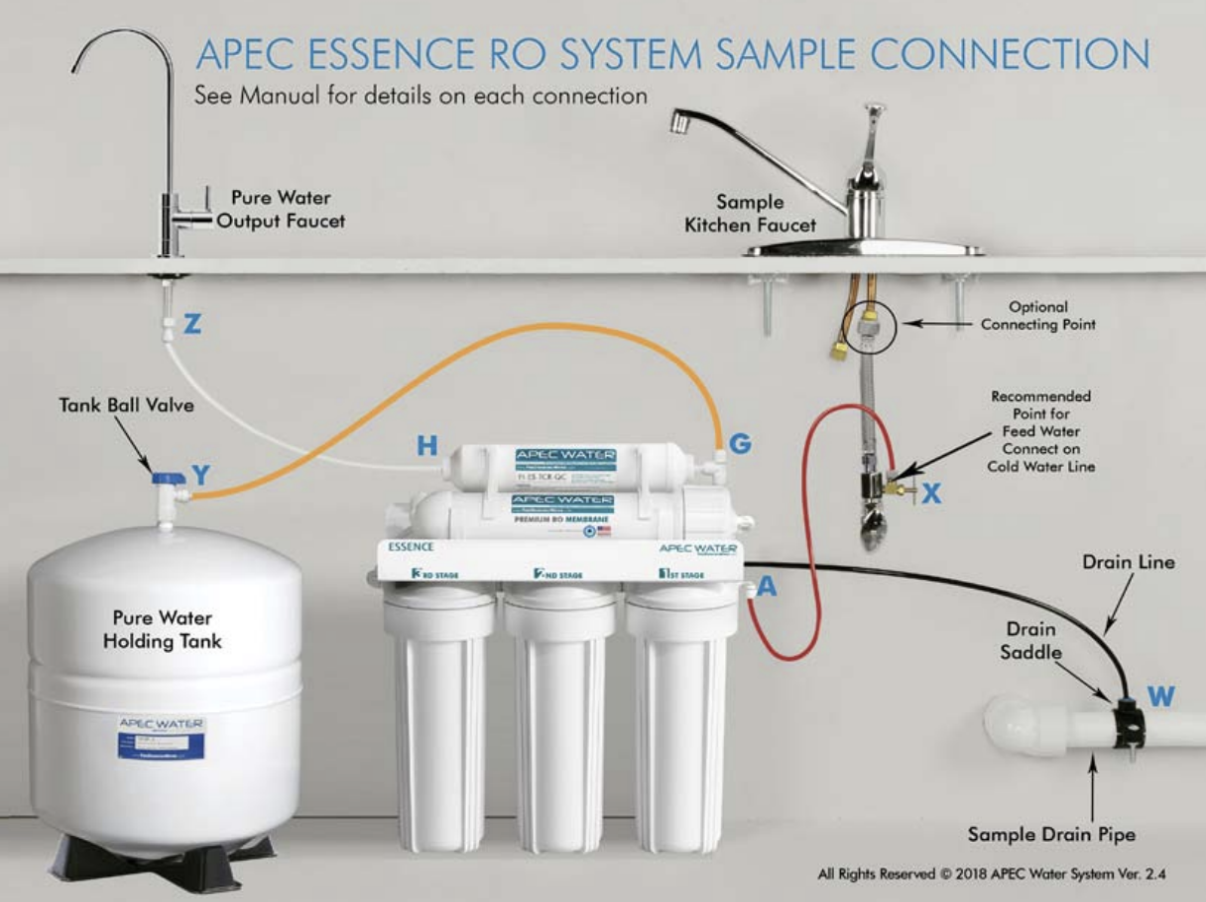
Installing the Reverse Osmosis Water Filtration System
is an easy process that can be done at home with the right tools.
Reverse osmosis water filtration systems are becoming increasingly popular for providing clean, safe drinking water. These systems are designed to remove contaminants from water, such as lead, chlorine, and other organic and inorganic materials, and can be installed in your home with relative ease. Installing a reverse osmosis system can save you money in the long run, as it eliminates the need for costly bottled water.
To begin, you will need to determine the size of the water filtration system that will best meet your needs. Once you have determined the size of the system, you can purchase the necessary components and begin the installation process. Start by installing the pre-filter, which will remove sediment and other particles from the water. Once the pre-filter is in place, install the membrane and post-filter. Finally, you will need to connect the system to your home’s main water line.
Installing a reverse osmosis water filtration system is a relatively simple process, but it is important to follow the manufacturer’s instructions closely. If you are not comfortable with the task, it is recommended that you hire a professional to handle the installation. In addition to providing clean, safe drinking water, a reverse osmosis water filtration system can help reduce your water bill and save you money in the long run.
Ensuring Proper Functionality of the System
Having access to clean, healthy drinking water is essential for a healthy lifestyle. Installing a reverse osmosis water filtration system is an effective way to ensure that you and your family have access to clean, safe drinking water. However, it is important to make sure that the system is properly installed to ensure it functions optimally.
When installing a reverse osmosis water filtration system, it is important to make sure that the system is correctly connected and that all necessary components are in place. This includes ensuring that the water pressure is balanced, the filters are properly connected, and the system is properly secured. Additionally, it is important to check that the hoses are correctly connected and not leaking.
To ensure the system functions properly, it is also important to maintain the system regularly. This can include replacing filters, monitoring pressure, and testing for contaminants. Regular maintenance can help to extend the life of the system and ensure that it continues to provide clean, safe drinking water.
Finally, using a certified plumber or water treatment specialist to install and maintain the system is recommended for optimal performance. Certified experts can ensure that the system is properly installed and maintained, ensuring the best possible water quality.
Installing a reverse osmosis water filtration system is an effective way to ensure that you and your family have access to clean, safe drinking water. It is important to make sure that the system is properly installed and maintained to ensure it functions optimally. With the right installation and maintenance, a reverse osmosis water filtration system can provide clean, safe drinking water for years to come.
Maintaining the System
Water filtration systems are great for removing impurities and toxins from our drinking water. But like any other technology, they require regular maintenance in order to keep working properly. Installing a reverse osmosis water filtration system is a great way to ensure that you will always have clean and pure water. But it is important to understand how to maintain your system as well.
When it comes to maintaining a reverse osmosis water filtration system, there are a few things to keep in mind. The first is to make sure that you are regularly replacing the filter cartridges. This is important to ensure that your system is always working at its best. Additionally, you should be checking the system for any signs of damage or corrosion. If you notice any issues, you should have a professional come in and take a look at it.
It is also important to make sure that you are cleaning the system. This can be done by running a cleaning solution through the system on a regular basis. This will help to prevent any build-up of sediment and will also help to keep the system running smoothly.
Finally, it is important to keep an eye on the water pressure. If the pressure is too low, this can cause the system to not work as efficiently as it should. If the pressure is too high, it can damage the system.
By following these tips, you can ensure that your reverse osmosis water filtration system is always running in peak condition. Regular maintenance is the key to keeping the system running efficiently and reliably for years to come.
Troubleshooting Common Issues
Reverse osmosis water filtration systems are a great way to ensure clean, safe drinking water for your home. However, like any other system, they can sometimes experience issues. Common problems include water pressure, water flow, and leaking. If your reverse osmosis system is not working properly, it is important to identify and troubleshoot the issue.
To start, check the water pressure. If the pressure is too low, the filter may not be able to adequately process the water, resulting in reduced filtration and water flow. If the pressure is too high, the filter may be over-straining, leading to reduced life span and water flow. Use a pressure gauge to measure the system’s water pressure and adjust accordingly.
Second, check the water flow rate. If the water rate is low, the filter may be clogged or the membrane may be damaged. Clean the filter and replace the membrane as needed. If the water rate is too high, the system may be over-filtering, resulting in a decrease in water quality. Adjust the flow rate as needed.
Finally, check for leaks. If there is a leak, the filter should be replaced. Leaks can be caused by a break in the connection or by a worn out part. Inspect the system for any visible signs of damage and replace the filter as needed.
By troubleshooting common issues, you can ensure that your reverse osmosis water filtration system is working properly. With proper maintenance and care, your system can last for years and provide clean, safe drinking water for your home.
FAQs About the How To Install A Reverse Osmosis Water Filtration System
1. What type of water filter should I use?
Answer: You should use a reverse osmosis water filter for the best results.
2. How much water will I need to install the reverse osmosis water filter?
Answer: You will need to measure the amount of water you need to install the filter. Generally, you need to measure the dimensions of the space where you plan to install the filter and then calculate the volume of water accordingly.
3. How often should I replace the reverse osmosis filter?
Answer: The filter should be replaced every 6 to 12 months, depending on the quality of the water in your area.
Conclusion
Installing a reverse osmosis water filtration system in your home is a great way to ensure that you and your family have access to clean, pure water. It provides a cost-effective solution for removing contaminants from your water, and it can be set up in a relatively short amount of time. With some basic instructions and the right tools, you can install a reverse osmosis water filtration system in your home.
